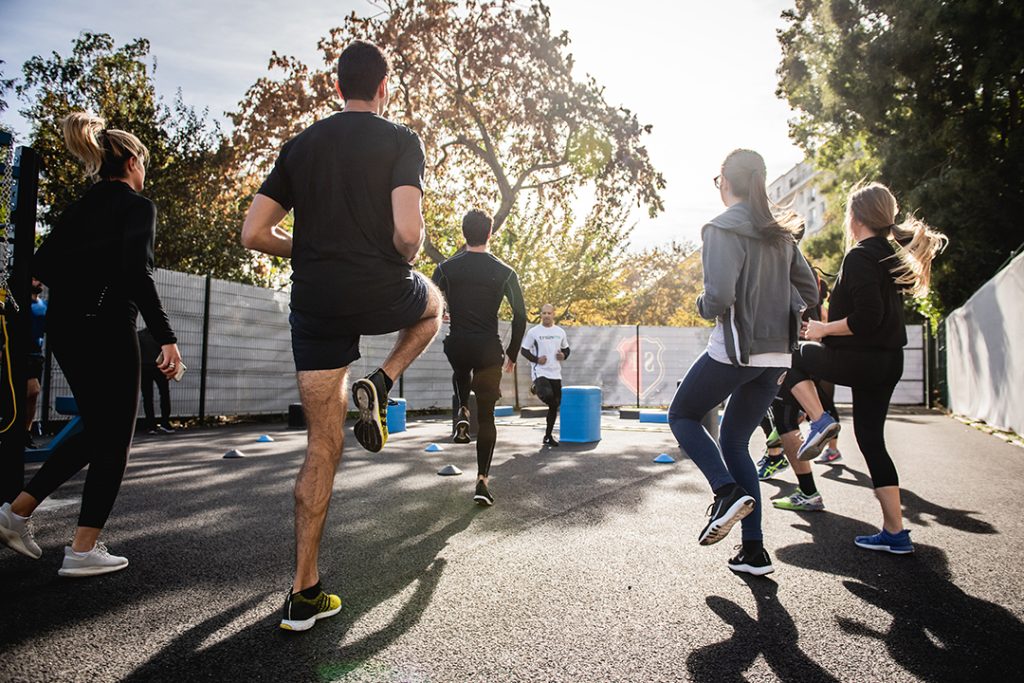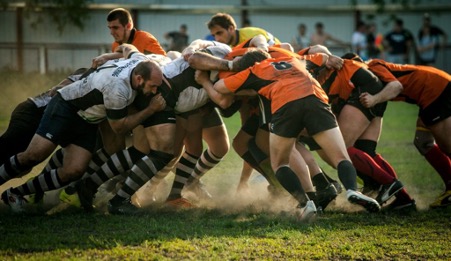In the midst of the Rugby World Cup, there seems a no better time to discuss contact sports.
Contact sports are some of the most exciting for spectators, offering a fast pace, twists, turns and lots of anticipation. For these reasons, it’s no surprise that contact sports, including rugby, football, hockey, boxing and martial arts are hugely popular amongst both participants and fans, but it’s probably no surprise either that because of their competitiveness, injuries are really common too.
Here, we look at just a few of the most common contact sport-related injuries we see in the clinic, and how they can be avoided.
1. Muscle strains
Any sport can put stress on muscles but contact sports in particular demand a lot from them. From the speed needed to run from or attack your opponent, to the strength needed to tackle, scrum or pin down the opposition, our muscles are put to hard work, often without us even realising the vast extent of what they are allowing us to do.
It’s no wonder then that quads, hamstrings and calf muscles are sometimes damaged, along with glutes, traps, delts and abs – all as a result of playing contact sports.
2. Dislocations and fractures
Contact sports are high-speed and energetic, meaning that collisions and falls are common. Unfortunately, bad knocks can result in breaks or dislocations, with the latter being particularly common in sports like rugby due to hands-on tackling and scrums. Legs, arms and collar bones are some of the most popular breaks we see, whilst dislocations are prevalent in the shoulders and knees.
Whilst rest and time are often the best initial cure for fractures and dislocations, the good news is that physiotherapy can really speed up your rehabilitation following your injury and can help you to strengthen to prevent similar injuries from happening again in the future.
3. Sprains
Sprains, which are ligament damage (as opposed to strains that involve muscles or tendons), are often associated with contact sports and are most commonly seen in ankles and knees. They occur most frequently due to twisting or sudden jerky movements, for instance, when changing direction to dodge an opponent.
ACL (anterior cruciate ligament) sprains are widespread amongst footballers, along with MCL (medial collateral ligament) sprains. Often these injuries take a little longer to heal than a strain and can cause swelling and bruising too.
4. Other injuries – bruises, cuts, concussion
There are a number of additional injuries that can happen as a result of playing contact sports. Again, because of a tendency to collide with opponents or fall to the ground, bruises and lesions are commonplace, and when they occur to the head, there is also the added risk of concussion. Whilst physio probably isn’t the first port of call for these types of problems, they’re worth mentioning as they’re amongst the most common of all contact sports injuries.

CONTACT SPORTS INJURY PREVENTION
Here are our top tips for preparing your body to play contact sports.
Practise makes perfect
If you’re playing a contact sport professionally, practice is part and parcel of your job. But even as an amateur sports person, you should ensure you attend regular training sessions to gain the required skills. Understanding your sport well, knowing the rules, techniques and best practices is a good way of increasing your chances of staying safe when playing competitively.
Warm-up
It’s obvious but crucial. Never undertake any kind of exercise without first warming up. You’ll increase blood flow to your muscles and enhance flexibility meaning your body’s ready to be pushed a little and you’re less likely to experience an injury.
Strength train
Adding some weight-bearing exercises into your training routine will build help you to protect both joints and bones. If problems do occur, your recovery time will likely be decreased if you’ve previously undertaken regular strength training. Think about the muscles most commonly used in your chosen contact sport, or any areas in which your experience weakness, and focus on those first. Our physios can recommend the most suitable exercises for you/your chosen sport.
Do some cardio
Adding some cardio into your training routine (like running, cycling, cross-training or aerobics) makes muscles more efficient and means you’ll be able to perform for longer before tiring.
Protect yourself
If you feel weakness in any part of your body, or have an old injury, don’t be afraid to wear supports on knees, wrists, ankles, etc. to help you to feel stronger or prevent further injury. For more aggressive contact sports, like boxing and rugby, consider wearing more heavy-duty protective equipment like head guards and gum shields, too. Our physios are happy to advise on the best supports and protective equipment for your individual needs and choice of sport.
Cooldown
Your cool down following training or a match is just as vital as your warm-up. Give your body a chance to recover and include stretching to increase your flexibility. The more flexible you get, the less likely you are to experience injuries from the sudden twists and turns often required in contact sports.
Whilst the odd injury may be to be expected if you’re regularly participating in contact sports, don’t let it put you off. The health and wellbeing benefits of taking part in competitive sports well outweigh the potential problems and by putting the correct preventative measures in place you can significantly reduce your chances of causing any damage.
If problems do occur, remember W5’s physios have a wealth of experience in contact sport-related injuries and are here to help. Get in touch today!






